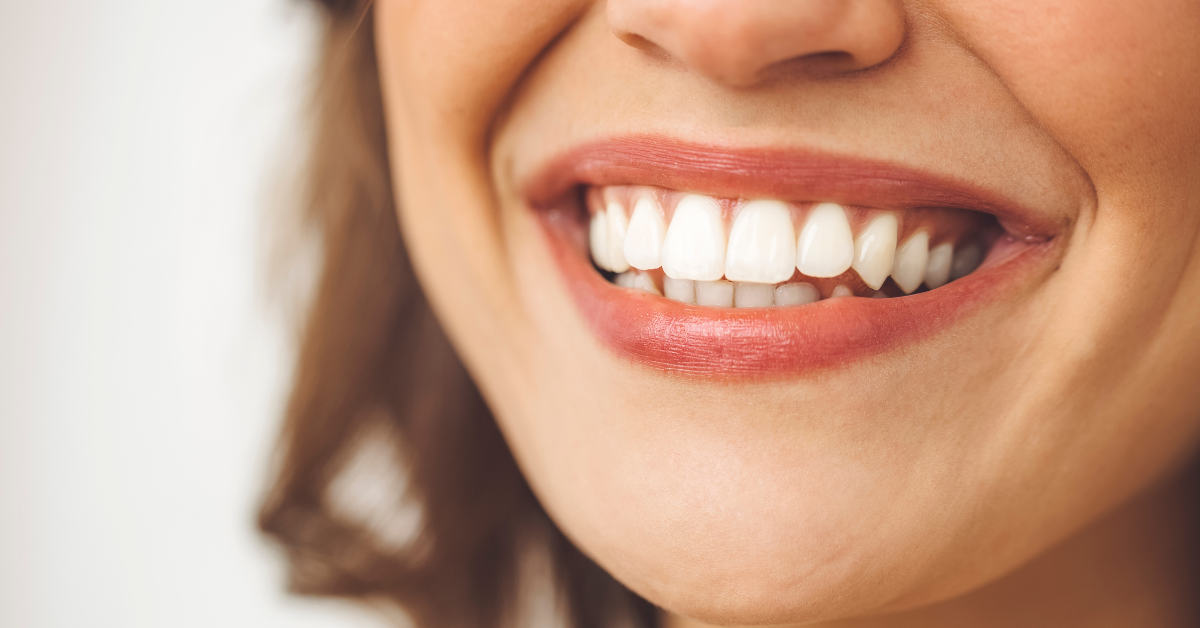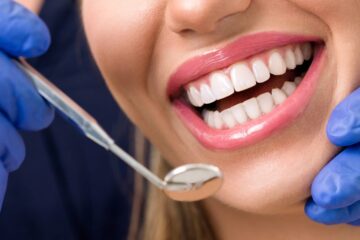When you smile, it should be as inviting as a warm home on a cold night, yet a gummy smile can often make you feel self-conscious instead.
You’ve likely heard of Invisalign, the nearly invisible aligners that straighten teeth without the bulky hardware of traditional braces, but you may wonder if they can address your concerns beyond tooth alignment.
It’s true that Invisalign has been a game-changer for many, subtly bringing teeth into their ideal positions, but when it comes to the excess gum display that characterises a gummy smile, its efficacy isn’t as clear-cut.
As you navigate the options for enhancing your smile, understanding the capabilities and limitations of Invisalign is crucial. Stay with me as we explore the intricate interplay between orthodontic solutions and periodontal aesthetics, which could be the deciding factor in whether Invisalign is the right choice for your pearly whites.
Key Takeaways
– Invisalign offers a non-invasive approach to treating gummy smiles by repositioning the teeth and reducing gum visibility.
– Customised aligners designed using 3D imaging technology allow for incremental tooth movement, which helps to reduce gum display.
– Invisalign treatment may be used in conjunction with periodontal procedures for a comprehensive treatment plan.
– However, Invisalign has limitations and may not be effective for cases involving gum tissue overgrowth or jaw bone issues.
Understanding Gummy Smiles
A gummy smile, characterised by an excessive display of gum tissue when smiling, can be attributed to a variety of dental and skeletal factors that affect the aesthetics of your smile. This condition may derive from hyperactive upper lip elevator muscles, an overgrowth of the maxilla, or an aberrant eruption pattern of the teeth, leading to an imbalance in tooth-gum proportions. Smile aesthetics are significantly impacted by the vertical height of the gums, which ideally should expose the smallest amount of gum necessary for a harmonious smile.
Your gum health also plays a crucial role in the presentation of a gummy smile. Inflammation and swelling of the gum tissue, often due to gingivitis or periodontitis, can exacerbate the appearance of excessive gums. As such, maintaining excellent oral hygiene and addressing any periodontal issues are essential steps in improving both the health and aesthetic aspects of your smile.
Furthermore, the length and shape of your teeth, as well as the position of your jaw, are critical components in defining smile aesthetics. Dental professionals evaluate these aspects through a comprehensive examination, considering the interplay between facial anatomy and dental structures to determine the underlying causes of a gummy smile.
Invisalign’s Role in Treatment
While addressing the dental and skeletal factors of a gummy smile is foundational, Invisalign treatment offers a non-invasive approach to reposition teeth and potentially reduce gum visibility. It’s essential to start with a comprehensive orthodontic assessment to ensure that Invisalign is a suitable option for you. This clear aligner therapy can be an integral part of enhancing smile aesthetics without the need for more invasive procedures.
Here’s how Invisalign plays a role in the treatment of gummy smiles:
– Customised Aligner Design: Utilises 3D imaging technology to create aligners that specifically target tooth movement to improve gum line symmetry.
– Incremental Tooth Movement: Slowly shifts teeth vertically, which can reduce the amount of gum displayed when smiling.
– Precision Cuts: Features like Invisalign’s precision cuts can facilitate the extrusion or intrusion of teeth, further impacting gum exposure.
– Interdisciplinary Approach: Often works in conjunction with periodontal procedures for a holistic treatment plan.
– Monitoring Progress: Allows for ongoing evaluation and adjustment of the treatment plan to ensure optimal results.
Keep in mind that while Invisalign can address certain causes of a gummy smile, it’s not a one-size-fits-all solution. Each case is unique, and outcomes can vary based on individual dental anatomy and the complexity of the orthodontic issues at hand.
Limitations of Invisalign
Despite Invisalign’s versatility in treating gummy smiles, it comes with certain limitations that may render it less effective for some dental conditions. It’s essential to understand that Invisalign, while innovative, can’t always manipulate gum tissue directly. If your gummy smile stems from an overgrowth of gum tissue or issues with the bones of your jaw, brace alternatives such as traditional orthodontics or surgical interventions might be required for optimal results.
Furthermore, the efficacy of Invisalign is contingent upon your commitment to wearing the aligners consistently. The recommended 22 hours per day can be challenging for some individuals, potentially prolonging treatment duration or compromising outcomes.
When conducting a cost analysis, Invisalign may present higher upfront expenses compared to conventional braces. This aspect is critical to consider, especially since some dental insurance plans may not fully cover Invisalign treatment.
Additionally, if the gummy smile is caused by factors outside of teeth alignment, such as hyperactive upper lip muscles, Invisalign alone won’t suffice, and adjunctive cosmetic treatments might be necessary.
Additional Corrective Procedures
Recognizing the limitations of Invisalign in addressing gummy smiles, you may need to consider additional corrective procedures to achieve the desired aesthetic outcome. While Invisalign effectively aligns teeth, it doesn’t directly reduce excessive gum visibility. Surgical interventions or lip repositioning may be necessary for a more comprehensive approach.
Here are some procedures that could complement Invisalign:
– Crown Lengthening: A periodontal procedure to reshape excess gum and bone tissue to expose more of the tooth’s surface.
– Gingivectomy: The surgical removal of gum tissue to reduce the gummy appearance.
– Orthognathic Surgery: A corrective jaw surgery that repositions the jawbone for both functional and aesthetic improvements.
– Lip Repositioning: A surgical technique to restrict the upper lip’s movement, reducing gum exposure when you smile.
– Botox Injections: Temporarily relaxes hyperactive muscles, limiting the upper lip elevation and thus the gummy smile.
When considering these options, it’s crucial to consult with a qualified dental specialist who understands the complexities of facial anatomy and can recommend the most appropriate course of action. The integration of Invisalign with these targeted procedures may provide you with the optimal solution to your gummy smile.
Maintaining Results Post-Treatment
After completing your treatment with Invisalign and any adjunctive procedures, it’s essential to adhere to a maintenance plan to preserve the improvements to your smile. Orthodontic relapse, a common occurrence where teeth gradually shift back towards their original position post-treatment, can undermine your results, leading to a recurrence of a gummy smile or misalignment. To prevent this, consistent retainer usage is imperative.
Retainers are custom-made devices that hold your teeth in their new position. Initially, you may need to wear a retainer full-time for a period, as recommended by your orthodontist. Eventually, you’ll transition to wearing it only at night.
Understand that teeth can move throughout life due to ageing, growth, and the pressures exerted by chewing and speaking. Retainer usage isn’t just a short-term commitment but often a lifelong one to ensure the stability of your orthodontic treatment.
Besides retainer adherence, maintain regular dental check-ups. Your dentist can monitor your oral health, check retainer fit, and address any potential issues before they compromise your smile. Proper oral hygiene also plays a crucial role in maintaining your results, preventing periodontal disease which can affect the positioning of your teeth and gums.
Frequently Asked Questions
Can Invisalign Treatment Affect My Speech, and if So, How Long Does It Typically Take to Adjust?
Invisalign may initially affect your speech, but with speech exercises, you’ll typically adapt within a few days to a week. The adaptation period varies, but most people adjust quickly to the aligners.
How Does Invisalign Impact Oral Hygiene Routines, Particularly for Those With a Gummy Smile?
You’ll find that Invisalign promotes better tooth alignment, streamlining your oral hygiene routine. Enhanced gum health is a perk, ensuring your gummy smile receives thorough, precise cleaning with less hassle.
Are There Any Dietary Restrictions I Should Be Aware of While Undergoing Invisalign Treatment?
You’ll need to avoid certain foods with Invisalign; particularly, steer clear of high-temperature items and choose snacks wisely to prevent damage or staining to your aligners. Stick to cooler, aligner-safe options.
How Often Do I Need to Visit the Dentist or Orthodontist During the Invisalign Treatment Process?
You’ll embrace a journey of transformation, attending appointments every 4-6 weeks. Your treatment frequency ensures progress is on track, and precise appointment scheduling is pivotal for the finest outcome with your Invisalign care.
Can Invisalign Treatment Be Combined With Other Cosmetic Procedures to Enhance the Aesthetics of My Smile?
Yes, you can combine Invisalign with other cosmetic procedures to improve smile symmetry and lip position, creating a more balanced and aesthetically pleasing appearance. Consult your specialist for a tailored treatment plan.
Conclusion
As you stand on the brink of decision, know that Invisalign might refine your bite, subtly elevating your smile’s harmony. Yet, its prowess has boundaries; it won’t reshape your gum line.
For a truly sculpted smile, further interventions beckon. Post-treatment diligence is paramount—retainers guard the beauty wrought.
The journey to diminish a gummy smile demands a blend of solutions—Invisalign is but one piece of this intricate puzzle. Choose wisely, as your smile’s destiny hangs in the balance.





